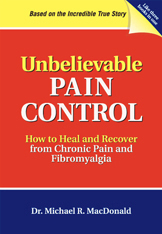
CHRONIC PAIN – NOT ALWAYS HARD TO BELIEVE
An interesting memory popped into my head the other day. I like it when this happens.
I remembered an insightful comment from a leader of a chronic pain group I knew.
At a group meeting, a woman asked her how she deals with people who don’t seem to believe that she lives every day in pain.
The group leader acknowledged that this is a difficult problem for many people with injuries, illness and pain. Pain is invisible, just like many injuries and illnesses. You could have cancer, heart disease or almost any health problem and it would not be obvious to other people.
But she didn’t let this invisibility stop her. In fact, she went in a totally different direction.
When people ask about you, they are really asking about how you are doing overall. When you give them details about the pain you experience or medical details, you are only giving them part of the story. And, with only part of the story, it is not surprising that many are still confused – and often not convinced.
After giving people a little information about the pain she lives with every day, this group leader pivots.
She changes direction and starts explaining about how her injuries and pain have affected many parts of her life. She gives them some objective, easily verifiable, facts about her losses. These are all undeniable, even by lawyers and insurance adjusters.
She offers the following shortlist of losses that she and her family have had to endure since her injuries occurred several years prior.
- she explains that she has lost her job
- there will be no career advancement or promotions for her
- she tells them how much money she loses each and every month
- she has had to sell her home and move into an apartment she can manage and afford
- her husband has had to work so much overtime that he is almost never at home
After a few of these details, most people start listening and stop with the challenging questions. These are not complex or confusing details about pain or diagnostics. They are parts of everyday life that most people can easily relate to.
When this group leader talks to her lawyer, she uses the same approach. She makes sure her lawyer doesn’t get hung up on the invisibility of her pain. Lawyers like to have objective, easily verifiable, evidence they can use in court, if necessary. It gives them more confidence in your case, which creates much less worry for you.
When you describe your injuries, pain and your losses, you are giving people more of the whole story. Now, they really have a chance to get it.
IT WORKS!
* * *
Thank you for reading. Thank you to Jon Tyson (image above) and Rachel Walker (image below, both from Unsplash) for your creative work.
Please feel free to steal, share and join our growing list of subscribers.
Mike




